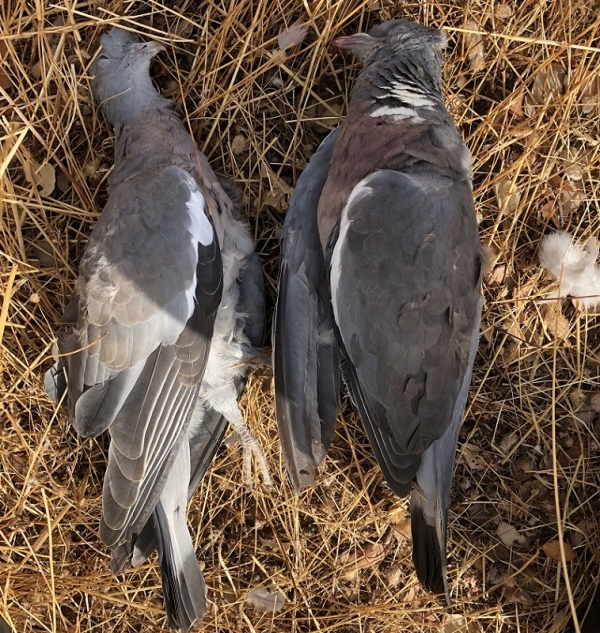Lead is considered toxic to animals and humans, and it is one of the main elements associated with small game hunting using firearms, whose ammunition generally contains small spheres of this metal. In Spain, specifically, its use is prohibited in wetlands due to the danger it poses to waterfowl, which ingest small amounts present in these settings, but the restriction has not been applied to terrestrial ecosystems.
Analyzing the influence of the contamination caused by this metal in small game birds in these types of ecosystems has been the aim of a new study published by the Department of Bromatology and Food Technology and the Department of Forest Engineering at the University of Córdoba, whose main conclusions point to the fact that the lead used in hunting activity "does not pose a significant risk to the health of those who consume this meat."
To do this, the research team analyzed lead concentrations in the breasts of almost 90 specimens of thrushes, wood pigeons and European turtle doves - three of the most hunted species of game. According to the results obtained, the levels of this metal in half of the birds analyzed was above the established limits, but, as the study suggests, "it would be an error to infer from this data that the consumption of this meat is detrimental to health. "
Poisonous only in heavy doses
The research team developed a probabilistic model in which they not only take into account the concentration of lead inside these animals, but also the frequency with which the product is ingested, a second variable that, added to the equation, makes all the difference. As in everything, it all depends on how much.
The study assessed the danger of consuming this meat under four different scenarios: occasionally, periodically, frequently and extreme consumers. For the latter, a group mainly consisting of hunters and their family circles, who eat the game they hunt, the risk could be greater, especially in cases of birds that have received more than four shots to the breast, the most representative portion for consumers. Hence, the research group is studying the possibility of developing a small guide for domestic use that may be useful for avid hunters, to help them decide whether a certain animal represents a significant health risk.
The work falls along a research line of the group, led by doctors Fernando Cámara-Martos and Jesús Sevillano-Morales through which they are seeking to carry out a nutritional and toxicological assessment of this type of meat; it also forms part of Jesús Sevillano-Caño's final project for his degree. According to this researcher, "the problem of lead is distracting attention from the great nutritional and gastronomic qualities of game meat, and this is something that we should not lose sight of".
References
Jesús SevillanoCaño, Fernando Cámara-Martos, Ricardo Zamora-Díaz, Jesús Salvador Sevillano–Morales. Lead concentration in game migratory upland bird meat: Influence of ammunition impacts and health risk assessment. Food Control Volume 124, June 2021, 107835. https://doi.org/10.1016/j.foodcont.2020.107835


